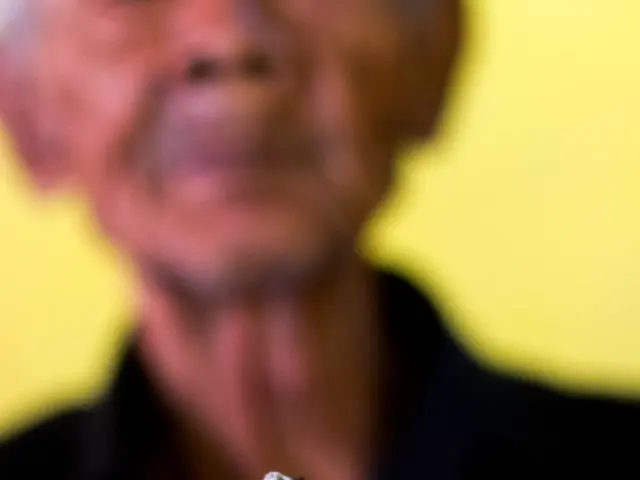Techniques for implementing lucidity in dream states
Are you intrigued by the mystifying world of lucid dreaming? Ever wondered if you could steer your dreams instead of just drifting along? A fresh investigation delves into three essential tactics that could help take the wheel in your dreams.
Ever had a bone-chilling nightmare that left you questioning if you were really awake or locked in a dream? We've all been there at some point. Yet, most of the time, even when our dreams are filled with outlandish, bizarre elements, we don't realize we're dreaming.
Sometimes, however, we may experience lucid dreams, where we are totally aware that we're dreaming. We can control the dreamscape, like in the movie Inception, and what unfolds within our dreams. Yet, for many of us, achieving a lucid dream at will remains a myth, despite the endless sleep-hacking tips on the internet.
Researchers, however, continue to explore approaches to lucid dreaming. Recently, a team led by Dr. Denholm Aspy from the University of Adelaide, Australia, scrutinized techniques to determine their effectiveness.
Combo Techniques for a Lucid State
The researchers collaborated with 169 participants (94 females, 73 males, and 2 identifying as others), splitting them into three groups. Each group concentrated on practicing different combinations of lucid dream induction techniques.
Three key techniques were used:
- Reality testing. This involves questioning your surroundings multiple times throughout the day to determine if you're awake or dreaming. Two common methods are rereading written text, as it usually changes in dreams, and the "inhalation test," where you inhale air with your lips closed.
- Wake back to bed (WBTB). This technique requires going to bed, waking up after 5 to 6 hours, staying awake for 10 minutes to an hour, and then going back to sleep. The goal is to dive directly into the rapid eye movement (REM) phase of sleep, which tends to yield more lucid dreams.
- Mnemonic Induction of Lucid Dreams (MILD). Often combined with WBTB, this method requires repeating a phrase such as "next time I'm dreaming, I will remember that I'm dreaming" before sleeping. This is meant to solidify the intention, increasing the likelihood of achieving lucidity within your dream.
Each group practiced one of three combinations: reality testing alone, reality testing and WBTB, or reality testing, WBTB, and MILD.
The researchers found that the group of 47 participants who integrated all three techniques - reality testing, WBTB, and MILD - achieved lucid dreaming with a mean success rate of 17.4 percent over a week.
Moreover, the researchers shared that those who managed to fall asleep within the first 5 minutes of implementing the MILD technique had a significantly higher success rate: they attained lucidity during 46 percent of their attempts!
"Importantly," Dr. Aspy states, "those who reported success using the MILD technique experienced less sleep deprivation the next day, indicating that lucid dreaming didn't negatively impact sleep quality."
Lucid Dreaming as Therapy
The team hopes their findings could pave the way for improved strategies to manage nightmares and enhance overall well-being. "Lucid dreaming," explains Dr. Aspy, "is a learnable skill with numerous clinical applications."
He continues, "Lucid Dreaming Treatment (LDT) promises significant benefits for treating chronic nightmares, including in those with post-traumatic stress disorder (PTSD). PTSD nightmares can be challenging to eradicate and may retraumatize the sufferer, perpetuating the disorder."
Additional applications of LDT include enhancing the quality of life for people with disabilities, physical rehabilitation through lucid dream rehearsal, and many others.
Dr. Denholm Aspy will continue to investigate promising lucid dream induction techniques with potential therapeutic value. His next step will be conducting a follow-up study that expands upon his recent findings.
The research led by Dr. Denholm Aspy from the University of Adelaide discovered that the combination of reality testing, Wake Back to Bed (WBTB), and Mnemonic Induction of Lucid Dreams (MILD) techniques led to a significant success rate in achieving lucid dreams. Participants who integrated all three methods had a mean success rate of 17.4 percent over a week, and those who fell asleep within the first 5 minutes of using the MILD technique achieved lucid dreaming in 46 percent of their attempts. These findings could potentially improve strategies for managing sleep disorders, nightmares, and boost overall mental health, wellness, and lifestyle. Dr. Aspy plans to further investigate promising lucid dream induction techniques for therapeutic benefits, such as in treating chronic nightmares of those with post-traumatic stress disorder (PTSD).








